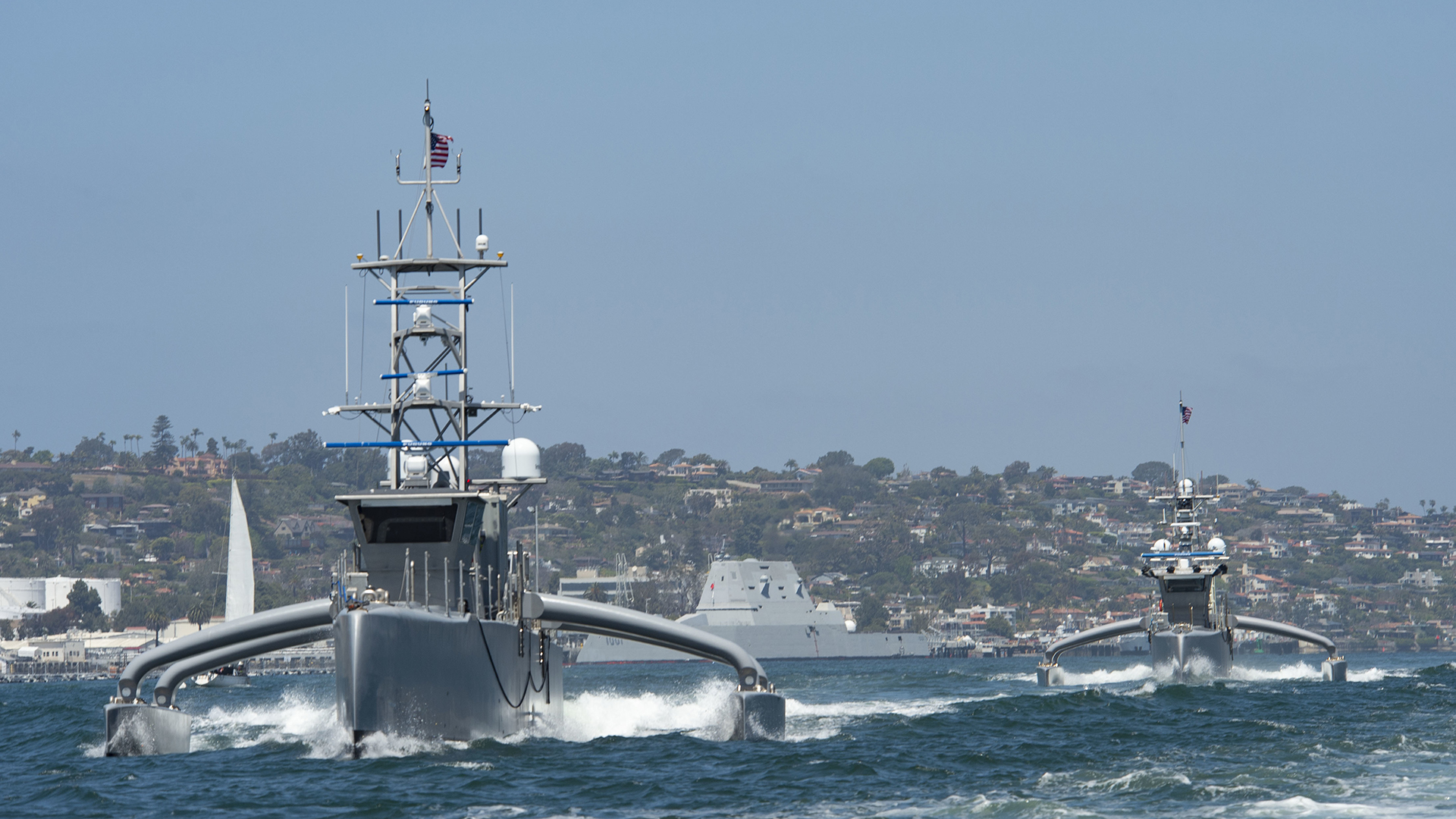

The Navy’s current efforts to test and develop unmanned and autonomous vessels are too vulnerable to espionage from China, Russia, and other U.S. adversaries, warns retired Navy Capt. Jerry Hendrix.
That’s why Hendrix is advocating that the Navy create a new ultra-secret research development and test range for unmanned vessels on Lake Michigan, where there is no chance the experimental vessels could be captured and reverse-engineered by rivals.
Hendrix recently wrote an article for Proceedings, published by the U.S. Naval Institute, in which he suggested that the Navy create an “Area 52” to test and build unmanned ships and submersibles – an homage to the Air Force’s Area 51 in Nevada, where the U-2 spy plane and F-117 Stealth Fighter were secretly developed.
“Properly developed and safeguarded, unmanned/autonomous capabilities could provide war-altering breakthroughs of the same magnitude as those which accompanied the advent of stealth and precision-guided munitions,” wrote Hendrix, who spent 26 years on active duty, including time as a strategist on the Chief of Naval Operations staff.
Subscribe to Task & Purpose Today. Get the latest military news and culture in your inbox daily.
But unmanned vessels are highly vulnerable to being captured when they are tested in international waters, Hendrix told Task & Purpose on Thursday. China scooped up a Navy unmanned underwater vehicle in 2016 in waters near the Philippines, and Iran tried to seize another unmanned vessel last August.

Currently, the Navy’s 4th Fleet, which operates largely in the Caribbean, plays a leading role in the Navy’s efforts to develop unmanned vessels.
The Navy specifically selected 4th Fleet to expand work done by the Navy’s Task Force 59, which has been operating unmanned vessels in the Middle East, Navy Secretary Carlos Del Toro said in April.
“The 4th Fleet area of operations provides us with an environment best suited to operationalize the concepts Task Force 59 has worked tirelessly to develop to increase our maritime domain awareness, or MDA, capabilities,” Del Toro said at the Navy League’s Sea-Air-Space conference. “These unmanned platforms will meet the needs of our Southcom and 4th Fleet commanders and our partners in the Joint Interagency Task Force South as they defend the approaches to our homeland.”
But the Caribbean is a particularly compromised environment for the Navy to test unmanned vessels, said Hendrix, who noted that Russia and China both have bases in Cuba, and are expanding their presence elsewhere in the region, including in Venezuela and Brazil.
“This seems to be an area of the world where our adversaries are making major investments,” Hendrix said. “Now with China going big into the Caribbean, I think that we ought to be really cautious about doing any type of cutting edge, leap-ahead capability there but it’s going to be instantly compromised. The Chinese already grabbed one of our unmanned, underwater platforms. They’ve demonstrated that they want to grab these new breakout capabilities so that they can reverse engineer them, as they have been reverse engineering things all along.”

To Hendrix, establishing an “Area 52” on Lake Michigan not only makes sense for security reasons, but it would also provide the Navy with a space to develop a community for sailors involved with unmanned and autonomous vessels.
Unmanned vessels have the potential of dramatically increasing the Navy’s reach and lethality in a war against China, and they cost much less than manned ships and submarines, Hendrix said.
For example, a Navy frigate could use low-observable unmanned platforms to vastly extend the range of its active and passive sensors, Hendrix said. The frigate could also be paired with an unmanned ship with Vertical Launching System cells to increase the ship’s firepower.
“Now, I’ve extended my sensor range and I’ve extended my ordnance capacity and I’ve done it for essentially less than half the cost of a destroyer,” Hendrix said. “When the time comes for combat, you’re going to be able to offset the Chinese. You’re going to be able to come at them at various different angles – or for that matter the Russians, or whoever the adversary is – in such a way that they cannot anticipate. To me, that’s the war-altering aspect of this.”
As unmanned submersibles are developed, they have the potential for using quantum communications to create “closer to real-time comms in the underwater environment,” he said.
Quantum communications, which can immediately detect if a hacker is trying to intercept a signal, could eventually provide a more secure way for the National Command Authority to contact U.S. ballistic missile submarines, according to Popular Mechanics.
But the fact that the Navy is testing unmanned vessels in the Caribbean could show that the service either has little faith in autonomous technologies or it doesn’t believe the Chinese and Russians are existential adversaries, Hendrix said.
“Does the Navy seriously believe or not that unmanned [technology] is the breakout capability that we say that it is?” Hendrix asked. “If we in fact believe that, then how do we justify that we’re going to test these breakout capabilities, these war-altering capabilities, right in front of our main adversaries? That just doesn’t make any sense to me.”
The latest on Task & Purpose
- We salute the USS Chung-Hoon for flying its battle flag on the way back to port
- The New Yorker makes a joke of the Army’s tactical bra. It’s not
- The Army’s yearslong fight over its controversial new fitness test isn’t over yet
- Army names finalists in race to replace M2 Bradley Fighting Vehicle
- The A-10 is retiring and the Air Force has no close air support replacement